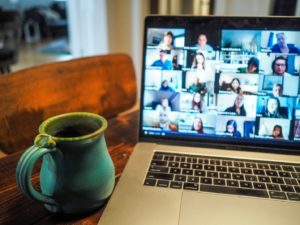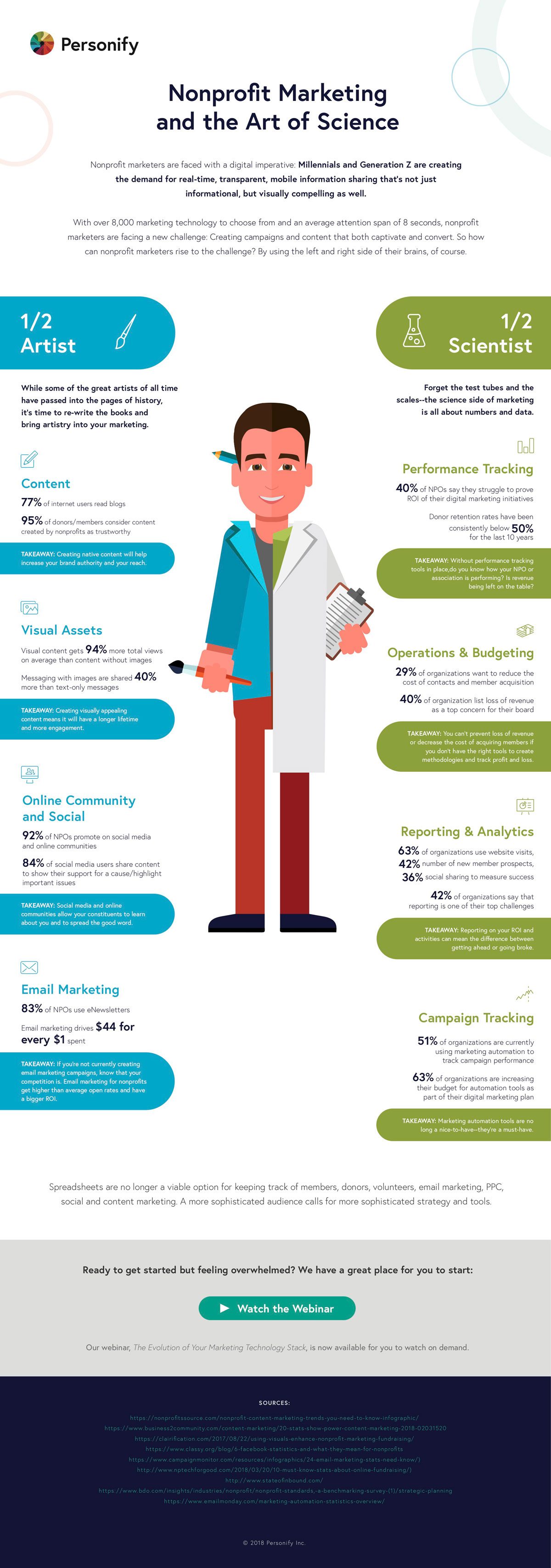The post Webinar Recap: Supercharge Your Hybrid Event with an Event Community appeared first on Personify.
]]>In a recent webinar, Rich Vallaster, Director of Marketing and the Tradeshow Wonk at Personify, discussed innovative strategies for successfully implementing event communities and connecting audiences at your next event. This webinar covered building event communities to increase satisfaction and retention, create additional revenue opportunities, and drive higher attendance to your hybrid events.
Here are some of the biggest takeaways from the discussion.
Your Audience Wants to Connect
As Vallaster stated early on in the webinar, “We were really good at in-person events. But, then Covid-19 happened, and Covid-19 taught us that communities matter more than ever.” People want to connect with like-minded professionals and engage in meaningful industry topics. Networking is essential for establishing vital relationships—and that is where event communities come into play. They have built-in trust thanks to familiarity, privacy protection, and ownership.
Event communities are not a new concept. Audiences have been asking for them for a while. Vallaster noted that he often heard that attendees wanted to stay in touch with the people they met at in-person events after they left. Event communities provide an outlet to keep the conversations going.
Audiences are conditioned and accustomed to utilizing digital tools to feel more connected and engaged. “We need to diversify the investment and risks associated with in-person events, and event communities do just that,” said Vallaster.
Event Communities Are the Hybrid Solution
In-person events will be the centerpieces of the digital experiences surrounding physical events. Vallaster stressed that that is “where we are headed in ‘Hybrid 2.0.’”
Webinars and online communities are going to drive people to in-person events. In-person events generate the most revenue, and digital will continue to facilitate networking opportunities and awareness around those physical events.
In a recent survey of 500 associations, Personify asked, “What is becoming more important for association members?” Personify found that 45% of respondents want to network with others in person. Still, 43% want to be able to network with others via digital platforms and communities. Thus, the data supports the importance of having an event community for your tradeshow and conference. “This truly is creating the total package,” said Vallaster.
How You Can Maximize Event Communities
Content: Your event community is your private audience. The data is yours. It is designed and scalable for your event. You can host live and on-demand videos for pre-, during, and post-event activities. Vallaster stressed that these communities encourage thought leaders to interact on relevant topics, which creates and fosters engagement. “It’s not just a virtual event; not everything is happening in a certain timeframe, “he said. It’s a year-round opportunity to solicit real-time feedback to improve your overall content initiatives.”
Revenue Generation: Sponsors, exhibitors, and industry partners are eager for opportunities to get involved year-round. Online marketplaces, sponsor advertising, and galleries for products and services are increasingly of interest for year-round exposure. The more networking that occurs online year-round, the more valuable your events will be.
Return on Investment: Event communities grow the value of your events. They foster and accelerate connections. They not only broaden your audience but also increase engagement among all audiences and offer new and exciting revenue opportunities. “The great thing about member-only areas is that they create exclusivity and desire to level up,” Vallaster remarked. “The general trend is that people wait until the very last minute. Habits have changed. That is where event communities can drive registration benefits. They create excitement to influence attendance at other events.”
Wrapping Up
Vallaster offered a lot of valuable information during the webinar for any organization interested in reaching its audience through event communities. From growing the value of your events to increasing engagement among all audiences, he made it clear that as organizations begin to stage hybrid and return to in-person events, the desire to connect is stronger than ever.
Click here to watch the webinar recording. To request a demo of Personify’s Community for Events, click here.
The post Webinar Recap: Supercharge Your Hybrid Event with an Event Community appeared first on Personify.
]]>The post New Year…New You? 3 Steps to your Nonprofit’s Brand Makeover appeared first on Personify.
]]> And why not? The dawn of a new year presents a great opportunity for a fresh start. As organizations put together budgets to present to their executive leadership and boards, the need to understand and document these resolutions may hit your inbox soon. This is especially true for big changes, like a rebrand.
And why not? The dawn of a new year presents a great opportunity for a fresh start. As organizations put together budgets to present to their executive leadership and boards, the need to understand and document these resolutions may hit your inbox soon. This is especially true for big changes, like a rebrand.
Not long ago, “investment” felt like a dirty word for nonprofits – after all, money spent on branding takes away from funds available for new programs or activities that can move an organization’s mission forward. But a strong brand can play an important, strategic role for an organization, driving long-term awareness, strengthening identity and creating cohesion among internal staff, volunteers and other constituents.
What is a Brand
Advertising executive David Ogilvy defined a brand as “the intangible sum of a product’s attributes,” while AIGA, the Professional Association for Design, defines a brand as “a person’s perception of a product, service, experience or organization.”
For commercial products, proving the brand’s value can be relatively straightforward. A consumer purchases a product and the product either delivers on the brand promise or it doesn’t. M&M’s for example, “melt in your mouth, not in your hand.” Take the time to apply L’Oreal mascara, “because you’re worth it.” Spill something? Grab a Bounty paper towel as it’s the “quicker picker upper.”
These relatable consumer experiences have become a growing part of talking about branding across nonprofits of all sizes. Many nonprofit executives define brand using for-profit language, in part because they’re often discussing brand with board members and donors whose own roots are in the for-profit world.
Yet for nonprofits, their brand effectiveness can be more subjective, relying on the audience to visualize a world that’s better for them having been part of the organization’s mission. The strength of the brand is determined by the trust, loyalty and enthusiasm it elicits. A nonprofit’s brand reaches beyond the organization and its mission, appealing to what’s most meaningful to their audience. Whether a donor-focused charity or a member-driven association, the nonprofit brand must show that the organization delivers on its promises for the individual and the broader collective.
Living the Brand
That’s a lot to live up to. Although the ambitions of nonprofit marketers are growing, the strategic frameworks and management tools available to them haven’t kept pace, with lots of the language and strategy borrowed from the for-profit sector brand playbook designed to boost name recognition and drive brand reputation. But optimizing your brand doesn’t have to be hard or take a back seat to other activities in your organization. Integrating the brand conversation alongside other planning discussions can ensure your brand is:
- Closely aligned with your organizational strategy
- Deeply ingrained with your nonprofit’s culture, ideas and values
- Part of each action, with staff recognizing interactions with members, donors, supporters and other constituents as unique opportunities to reinforce your brand’s value
- Reflected in what you say and how you say it
- Fully supported by your visual identity and technology tools, creating opportunities for consistent quality across all communications and interactions.
Taking Your Brand to the Next Level
Branding delivers tremendous value for nonprofits, driving the awareness that leads to acquisition, the enthusiasm that drives engagement and the loyalty necessary for strong differentiation in a crowded marketplace. While branding should be part of everyday conversations around organizational strategy, culture, messaging and tools, there are several steps nonprofits interested in improving their brand in the new year can take to get started:
- Know Your Target Audience: Without a clear vision of who your organization engages with, building a brand to drive their support is next to impossible (or at the very least inefficient)! Personas can provide a helpful framework for identifying who’s who. Learn more about defining your target audience and personas to get the ball rolling.
- Differentiate Yourself: Why you? Showing what makes your organization unique is paramount in helping you stand apart from other nonprofits serving a similar need and trying to reach the same audience. Does your organization have a specific goal that others aren’t working towards? Do you serve a niche audience or geography? Are your programs unique? Donors and members have a growing number of choices when it comes to which organization to support – give them a reason to choose yours.
- Be Approachable: The ability to be relatable is essential to forming a connection and creating deep, long-lasting relationships. Articulate, as part of your brand, how donors, members and other supporters can become involved in your brand’s promise and organization’s mission.
Nonprofits who ignore their brand – or deny they have a brand – do so at their peril. People’s perception of your nonprofit can impact your acquisition, engagement and retention efforts. Strong brand cohesion, and the high levels of trust a great brand can inspire, contribute to greater organizational capacity and social impact. Bring your brand to life to influence the way your nonprofit is perceived across channels, whether in person or online, your communities and constituents in 2019 and beyond.
Want to know more about elevating your brand’s reputation across channels? Discover the must-have martech tools you need in 2019 to effectively leverage your marketing technology stack.
The post New Year…New You? 3 Steps to your Nonprofit’s Brand Makeover appeared first on Personify.
]]>The post What’s Old is New Again: 4 Ways to Make the Most of Your Existing Content appeared first on Personify.
]]> For the unfamiliar, Caboodles were the must-have accessory for teen girls coming of age in the late 1980s. A molded plastic cosmetic case based on the functional design of a tackle box, Caboodles included all the compartments necessary for your blue eyeliner and frosted lipstick, a mirror and came in all the pastels you could imagine.
For the unfamiliar, Caboodles were the must-have accessory for teen girls coming of age in the late 1980s. A molded plastic cosmetic case based on the functional design of a tackle box, Caboodles included all the compartments necessary for your blue eyeliner and frosted lipstick, a mirror and came in all the pastels you could imagine.
And, although it had been years since Caboodles had been on store shelves, their magic was in full effect with the display surrounded by wide-eyed young girls eager to take one home.
Then I went to the mall and saw, on a hanger in a trendy chain store, a black and blue checkered sweater I’m fairly sure I owned in 1991, a black and blue checkered number I was going to wear to the MTV VJ audition I was convinced would happen at any moment.
Retailers routinely turn to what’s been tried and tested to boost their odds for success. Television networks and movie studios do the same, introducing reboots, because these characters and the stories they tell are familiar, beloved parts of our lives.
When it comes to programming, there’s no reason nonprofits and associations can’t do the same. Constituents have a relationship with your organization and trust the content you produce. While delivering fresh information and perspectives is important, you don’t always have to reinvent the wheel. It’s also OK to open up the archives and find new inspiration in existing material. There are many benefits to finding fresh ways to bring new life to old favorites including:
- Sharing with New Audiences: Maybe you published important research but your members hadn’t yet joined your organization. Or maybe they’re already a member but didn’t have the time to read a white paper or attend a webinar? Share existing content in a new format or channels such as rich media syndicated through new threads or discussion topics in your community, social properties and content forums.
- Elevating Old Favorites: Have a timeless classic on your shelf – the piece, guide, tip or campaign that was a huge hit with your constituents the first time around? Consider bringing it back for an encore performance or update the information with new data for a refresh that extends the outreach to new and old audiences alike.
- Get the Biggest Bang for Your Buck: Developing and delivering quality content is hard work – there’s a lot of effort that goes on behind the scenes. Take information that you and your team spent time curating and writing, and give it more runway. Consider updating with a slant towards your SEO keywords and common search terms. Elevate its reach across platforms for an integrated outreach of your programs.
But not all content deserves a new lease on life. Times change, technology continues to evolve and trends today may be different than they were last year or the year before. When looking for content to repurpose, ensure the topic is still timely and relevant. Determine how much updating needs to be done—a guide talking about Netscape as an internet browser or resurrecting a blog post on MySpace strategy may not convey the message you’re looking for.
In addition to details, understand if it’s a topic or broader area of interest for your members by digging into your website analytics, e-commerce data in your CRM or event details to understand if it is something people are eager to hear about.
Already have some pieces in mind? Here are four that are top of mind as we head into 2019:
1. Send Your Blog Posts on the Road as Podcasts
Those of us in Austin, like many of your members throughout the world and country, spend a lot of time commuting to and from work, darting through airports or running errands around the city. Podcasts have exploded as a way to make the most of this time, with a wide variety of available topics and lengths that go from snackable, bite-sized tidbits to multi-episode, deep dives into a very narrow topic. Want to get started with podcasts but don’t think you have content? Look back in your blog archives and pull a couple of favorites to record.
2. Reinvent Blog Posts as Guides
Have you blogged a lot about a particular topic, trend or new regulation? Maybe specific to your industry, the history of your organization or how to do something that’s of unique interest to your audience?
Packaging multiple blog posts together as a single guide not only ensures your audience understands everything you have to say about a topic but creates tremendous convenience as well. You can even spin the guide into an email campaign, social media posts, a webinar…the list goes on!
3. From PowerPoint to View Point – Infographics Made Easy
Those who know me well know that I love nothing more than a good slide deck. And before presenting a Personify webinar or live event, I spend a lot of time on my deck. Sure, a lot of it is formatting – making sure everything is aligned, the colors are right, the charts aren’t fuzzy – but more of it is focused on the narrative.
- What story does the presentation tell the audience?
- What do I want them to know?
- What should they take away?
This focus on storytelling and plot also serves as the foundation for great infographics. Infographics are taking a star turn right now – they’re informative, easy on the eyes – but they can be a lot of work, requiring huge amounts of research and design support. But with the right presentation you’re off to a running start – your story is already laid out, facts assembled and even some of your graphics are in place and ready for their close-up.
4. Highlight your Members Stories for Impact
Do you have a number of success stories showing the impact that your organization has had on members and donors? Real people and real stories have a real impact on your mission. Whether short quotes, self-directed video shorts, guest blogs or a Q&A in the community—flip the script from your team creating all the content and give your members a platform to co-create with you.
Your constituents are looking for a place to learn, share and grow their passion with your organization– whether it’s in your community, on your website or at live events. Repurposing content and supporting co-creation of content can be an easy way to make the most of resources already stretched thin, allowing you to quickly fill gaps quickly with relevant outreach efforts because the heavy lifting has already been done. Take a look at what is in your content Caboodle and consider bringing it back for a makeover – it’s not as hard as you think.
The post What’s Old is New Again: 4 Ways to Make the Most of Your Existing Content appeared first on Personify.
]]>The post Where the Left and Right Brain Meet: Nonprofit Marketing appeared first on Personify.
]]>The Left Brain Meets the Right Brain
While marketers in the past could be analytical or creative, the modern demands on the NPO marketer mean having an intellectual ambidexterity that hasn’t existed before. Online giving grew by 12.1% in 2017 and is projected to grow in 2018 and 2019, and the face of the donor may be younger than you think. While 11% of total US giving came from Millennials last year, 59% of Generation Z donated based on a message or image that they saw on social. Not only are young people more aware of issues, but they’re more willing to donate both their time and money to the causes that speak to them.
These younger audiences spend upwards of 10 hours a day consuming content. This means two things:
- In order to stand out, your campaigns must be targeted.
- In order to convert, your campaigns must be interesting.
While a simple “Please give” CTA may have sufficed in the past, digital audiences are far savvier and more educated. They want to know who your organization is, where their donation will go, what their donation will do to help, and why they should give their time and monetary donations to you instead of the one of the other 1.5 million nonprofit organizations in the US.
Right Brain: The Artist
With the rise of the educated donor, strategy and creativity must collide in a big way. By creating interesting, beautiful and highly targeted content, you can reach the right people at the right time. However, it’s crucial to remember: your content is one in a sea of other messages, so your messaging must be relevant as well as creative.
Creative marketing includes the following disciplines that you’ll need to reach the new, digitally-savvy market:
Email Marketing
The NOW effect isn’t just about text messages—Millennials actually prefer their communication through email. With that in mind, creating beautiful and engaging email marketing campaigns that speak to your target audience can help you educate and convert right from their inbox.
Content Marketing
Blogs, testimonials, white papers—whatever you create should tell a story and urge an action. Let your content be the soul of your creative strategy: use different writers to present different perspectives, let people share their stories. This type of authenticity appeals to demographics of all ages.
Social Media Marketing
Despite many pronouncements to the contrary, social media is not dead. In fact, more and more users are logging in and staying logged in—consuming content across multiple platforms for up to 10 hours a day. New social algorithms are putting content with lots of organic engagement at the forefront so be creative with your messaging and encourage users to share their stories on your page and share your posts.
Visual Content
Video and images are shared more than text (40% more, actually), so make sure you have striking imagery and video content for users to share to increase your organic reach and engagement rates. This means your content can reach more people in more corners of the world than ever before.
Left Brain: The Scientist
Every great artist knows that creativity is not the only part of inspiration—strategy, data, planning and intent can take something beautiful and make it successful. Here are some of the more analytical disciplines you’ll need:
Performance tracking
Simply launching a campaign and hoping it will do well is not an option. Using tools to help you track your performance ensures you’re on the right track and allows you to troubleshoot and optimize if you’re not.
Operations
Organizing your growing constituency is no easy task. Without the aid of a CRM, keeping track of who is who and what they are doing becomes almost impossible. Wasting both time and money organizing contacts and prospective members mean less time and money spent on new programs and campaigns.
Analytics
Proving the ROI on activities is a major pain point for a lot of NPOs and associations. A gut feeling is not an acceptable metric for success and so having an analytics tool to help you track success is critical.
Campaign Tracking
Speaking of tracking success—do you know how your campaigns or performing? Workflows, drip campaigns, pay-per-click, paid social—how are all of your tactics not only performing as individuals but how are they performing together? Tracking the performance of your campaigns is crucial—not just for tracking the success of today but for planning the growth of tomorrow.
Feeling a little overwhelmed? We’ve created an infographic to help demonstrate what you need to do and where you need to focus to create a truly data-driven and captivating marketing campaign.
The post Where the Left and Right Brain Meet: Nonprofit Marketing appeared first on Personify.
]]>
